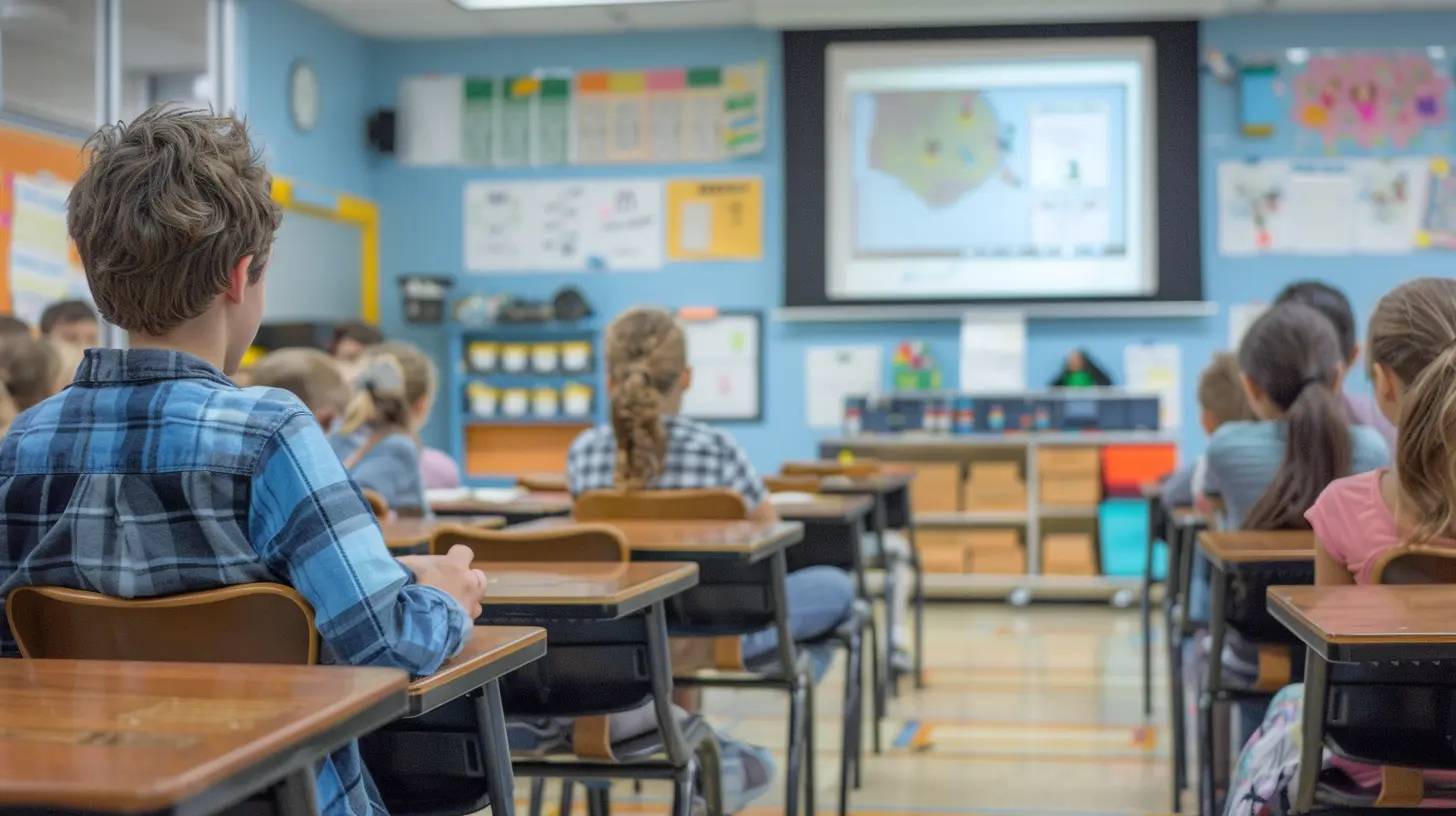How to Incorporate Peer Teaching in the Flipped Classroom
17 June 2025
So, you’ve flipped your classroom. You’ve made the videos, uploaded the resources, and assigned the pre-class work. But your students still come into class looking like deer in headlights—uncertain, unengaged, and totally not ready to apply what they “learned.” Sound familiar?
Well, guess what? You’re not alone. And more importantly, there’s a secret weapon you can use to transform your flipped classroom into a buzzing hive of learning awesomeness: peer teaching.
Yup. Having students teach each other might sound chaotic at first, but stick with me. We're going to break it down, step-by-step, with a splash of quirky and a whole lot of practical.
What Even Is Peer Teaching?
Imagine students teaching students. That’s it. That’s peer teaching in a nutshell. But don’t let the simplicity fool you—this method packs a powerful pedagogical punch.Peer teaching can mean anything from one-on-one tutoring, to small group discussions, to full-on student-led lessons. It’s about creating a learning culture where students aren’t just passive consumers of information, but active contributors to each other’s learning journeys.
In the flipped classroom model, where direct instruction happens outside of class (through videos, readings, etc.), peer teaching can make the in-class time way more interactive and meaningful.
Flipped Classroom + Peer Teaching = Match Made in EdTech Heaven
Let’s be honest. The flipped classroom makes room for creativity. The teacher's role shifts from "sage on the stage" to "guide on the side" (yes, that cheesy rhyme is still relevant). But what if we take it a step further and let students become guides too?Peer teaching fits perfectly into this model because:
- Students come to class kinda prepared (thanks to pre-class videos)
- Class time is now free for deeper learning
- Students are already sharing confusion and understanding among themselves
So why not make peer interaction intentional, structured, and—dare I say—fun?
Benefits of Peer Teaching in the Flipped Model
Before we dive into the “how,” let’s get real about the “why.” This isn’t just some fluffy group work. There are real, research-backed perks to mixing peer teaching and the flipped classroom:1. Better Understanding for Everyone
Students teaching content to others forces them to really understand it. Explaining something out loud brings out the “aha” moments like pop rocks in soda.2. Active Engagement
When students are in charge of teaching, they perk up. Nobody wants to be that person who doesn’t know what they’re talking about in front of their peers.3. Social Learning = Retention Boost
We learn better when we learn together. Peer talk activates brains, clarifies confusion, and creates emotional connections with the content.4. Builds Communicators and Collaborators
Let’s face it—kids need soft skills too. Peer teaching helps hone communication, leadership, and empathy.
How to Incorporate Peer Teaching in the Flipped Classroom
Okay, let’s quit the fluff. You're here because you want to know how to actually do it. So let’s get into the nuts and bolts.Step 1: Lay the Foundation (Don’t Skip This!)
You can’t just say, “Hey guys, teach each other today. Good luck!” and expect magic. Trust me, I’ve tried. Spoiler: it doesn’t work.Start by preparing your students. Make sure they understand:
- The purpose of flipped learning (watch/read before class)
- The role of peer teaching in their learning
- What good collaboration looks like
Spend time building classroom norms. Model how to give and receive feedback. Teach them how to ask good questions and how to listen. This groundwork is crucial—like building a sturdy nest before letting the baby birds try flying.
Step 2: Group Strategically
Ah, grouping. The eternal headache.Random groups? Recipe for awkward silence.
Same-level groups? Might reinforce misunderstandings.
Mixed-ability groups? Ding ding ding.
Mix students strategically based on performance, learning styles, or communication skills. The idea is to have some “explainers” and some “question-askers” in each group.
Bonus Tip: Rotate groups regularly to shake up dynamics and expose students to different thinkers.
Step 3: Flip First, Then Teach Each Other
Stick with the flipped model. Students do the initial learning at home—watching videos, reading, or exploring interactive modules.In class, instead of reteaching everything (tempting, I know), launch into peer-led activities:
Think-Pair-Teach
- Students individually answer a prompt based on the pre-class material- Then pair up to discuss
- Each student “teaches” their reasoning to the other
- Share out with the class
Jigsaw Style
- Assign each group member a different sub-topic from the pre-class content- They become the “expert” on that part
- Then teach it back to their group
Peer Review & Feedback Loops
- Have students solve problems or write responses- Swap with a partner or group
- They give feedback or suggest edits
- Then revise (learning by doing and critiquing!)
Student-Led Workshops
- Give students a concept to master- Their job? Teach it to the class the next day
- They create explanations, examples, even Kahoots or role-plays
Watch your shy students turn into mini-professors. It’s an epic glow-up.
Make it Fun, Not Forced
Peer teaching doesn’t have to be stiff and formal. Infuse it with energy! Try:- Gamified learning (team competitions, peer-vs-peer challenges)
- “Explain it like I’m 5” sessions
- Speed Teaching (quick-sharing rounds like speed dating)
- Peer Podcasting (record mini-audio lessons)
Remember, fun equals engagement. Engagement equals learning.
Avoiding Common Pitfalls (You Know They’re Coming)
Let’s be real for a sec. Not everything goes smoothly, especially early on. Here are some bumps to watch out for—and how to dodge them:Pitfall: The Blind Leading the Blind
Some students might still be fuzzy on concepts. Solution? Provide checklists, scaffolds, or “hint cards.” You’re still guiding the learning—they’re just steering the ship.Pitfall: Social Awkwardness
Some students are shy. Some don’t “click.” Solution? Give structure. Use sentence starters. Give roles (e.g. speaker, summarizer, questioner). Slowly build comfort zones.Pitfall: Low Accountability
Not everyone pulls their weight. Solution? Use peer evaluation, reflections, and even small stakes grades for effort and participation. Keep students honest.Assessment: What’s the Deal?
“But how do I grade this?” A question as old as education itself.Assess the process, not just the product. Look at:
- Peer feedback given and received
- Contributions during group work
- Reflection on what they taught or learned
- Self-assessment rubrics
Try “exit tickets” where students summarize what they learned from a peer. It’s quick and insightful.
Real Talk: It Takes Time… But It’s Worth It
Incorporating peer teaching into your flipped classroom can feel like learning to juggle flaming pineapples while riding a unicycle. But don’t let that scare you away.Like any good classroom practice, it takes time, patience, and a hefty sense of humor. You’ll tweak, adapt, and maybe even faceplant a few times. But once it clicks? Oh, it clicks.
Watching your students teach each other, engage deeply, and actually enjoy learning? That’s the real teacher gold.
Final Thoughts
At the end of the day, you’re not just teaching content—you’re teaching learners how to learn. When students become the teachers, they grab the wheel of their own learning journey. That’s powerful stuff.So, give peer teaching a go in your flipped classroom. Start small. Keep it messy. Celebrate the little wins.
And hey—flipped doesn’t have to mean flipped-out. With the right mix of structure, creativity, and trust, peer teaching can transform your class from passive to passionate.
Happy flipping, happy teaching, and may the peer force be with you.
all images in this post were generated using AI tools
Category:
Flipped ClassroomAuthor:

Eva Barker
Discussion
rate this article
2 comments
Samantha Gray
Empower learners through collaborative peer teaching!
June 20, 2025 at 3:21 AM

Eva Barker
Absolutely! Collaborative peer teaching fosters engagement and enhances understanding, making it a powerful strategy in the flipped classroom.
Lexi Pace
This article beautifully highlights the synergy of peer teaching and the flipped classroom, emphasizing collaboration and enriched learning experiences for students.
June 17, 2025 at 12:47 PM

Eva Barker
Thank you for your kind words! I'm glad you found the connection between peer teaching and the flipped classroom valuable.


